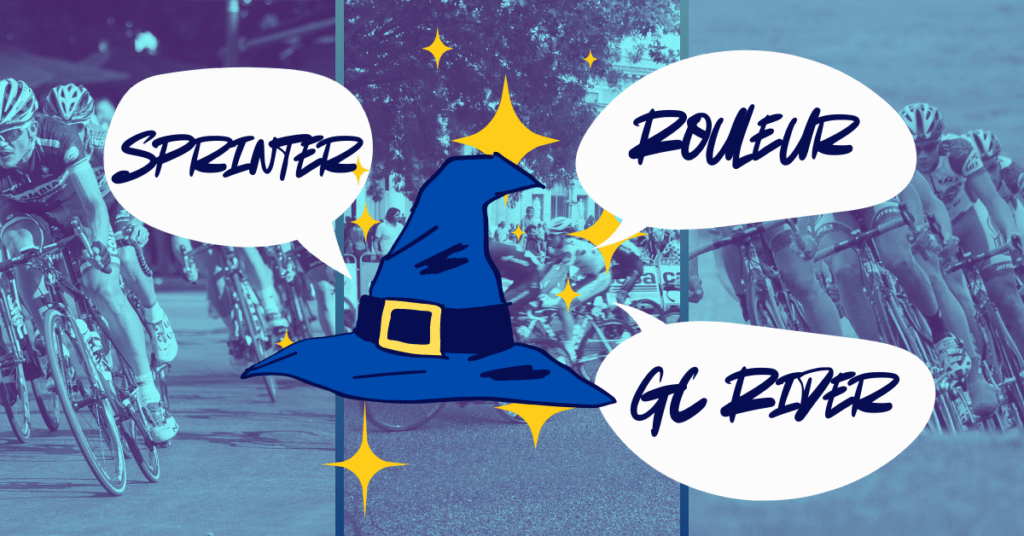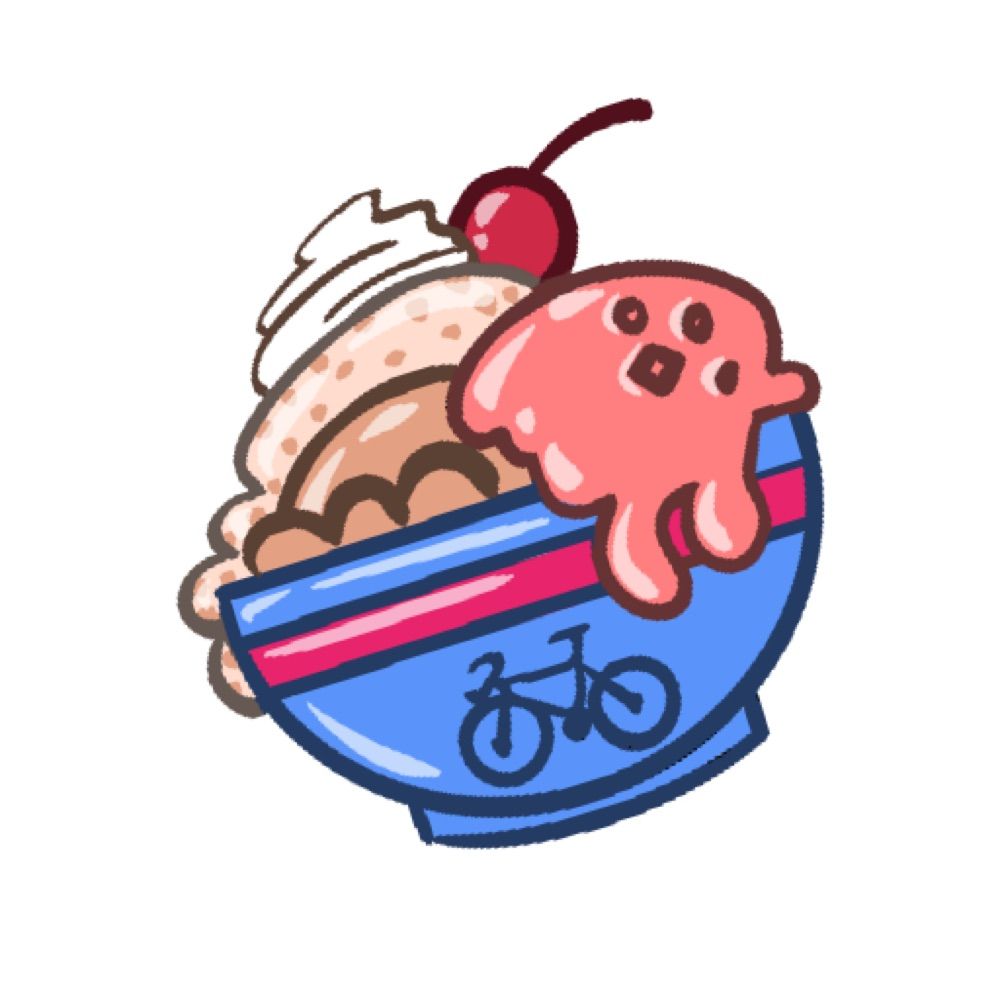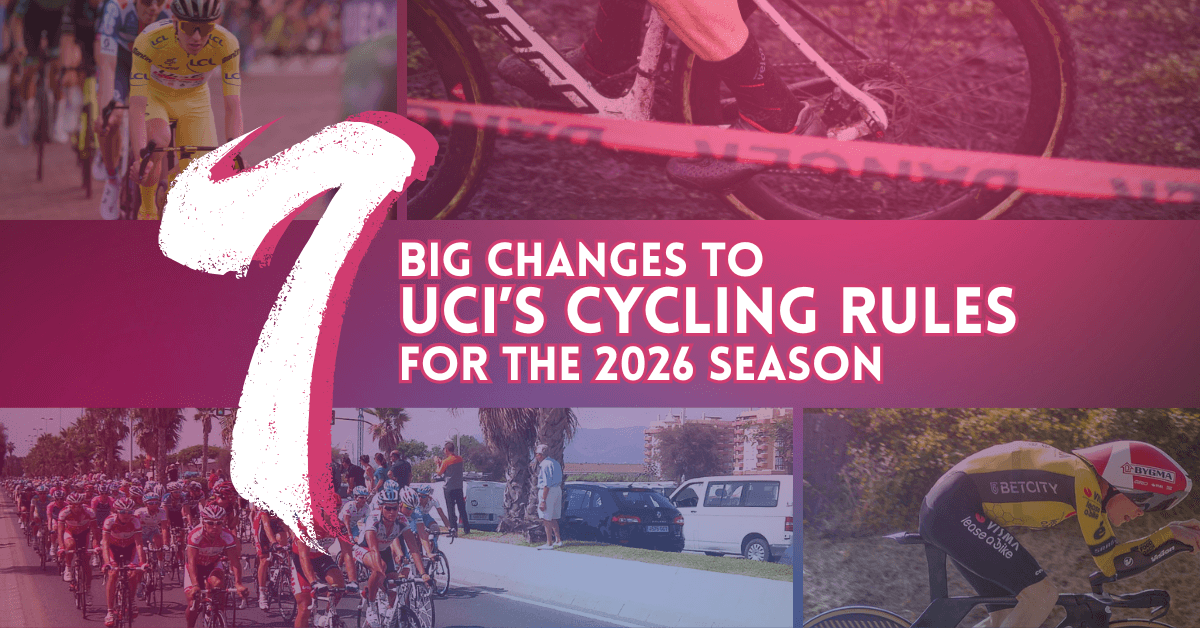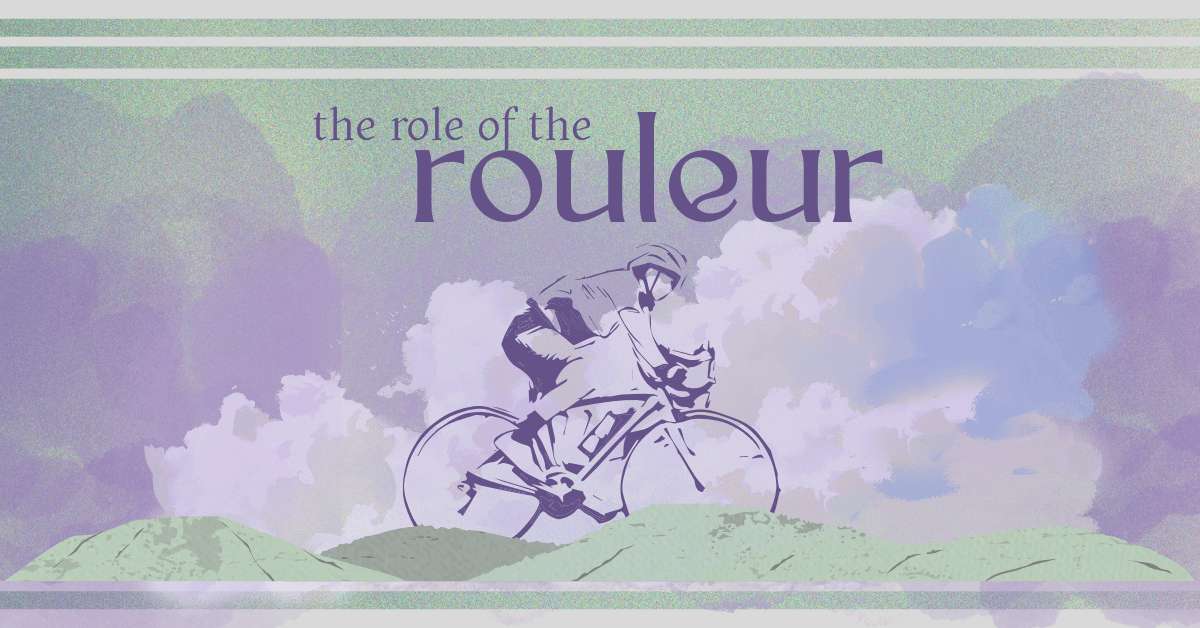A deep dive into the different ‘rider types’ within the modern pro peloton.

It’s well known in the world of cycling that there are different ‘rider types’, and most riders can be sorted neatly into one of the following categories: sprinter, ‘pure’ climber, General Classification (otherwise known as GC) rider, puncheur, time trial specialist, and rouleur.
Some of these categories overlap in some respects, and we do occasionally see outliers, with some riders – such as Tadej Pogačar, Remco Evenepoel, Wout van Aert and Lotte Kopecky – being able to climb, time trial and perform well in one-day races, to varying degrees, and some riders that transition between categories as their careers progress and their physical qualities change. But, for the most part – especially in recent decades, where we’ve seen more and more riders actively choose to hyperspecialize and become more selective with the races they ride – riders are often typecast relatively early into their professional careers.
In this article, we’ll take a deep dive into the defining features of each specialism, and explore the main physical qualities that act as determining factors in this Sorting Hat-esque setup where riders can be filed neatly into categories in which, more often than not, they’re destined to remain for the rest of their professional careers.
Embed from Getty ImagesWhat are the different ‘rider types’?
★ Sprinters
One of the most distinct, and often rigid, specialisms, is sprinting. Sprinters – such as Olav Kooij, Lorena Wiebes, Tim Merlier and Charlotte Kool – usually target mostly flat races, or flat stages in a stage race, where they focus on staying safe in the peloton throughout the race, and then follow their teammates, neatly organised into ‘sprint trains’ (if all goes to plan), in the final few kilometres, with the aim of sprinting to victory right at the end.
There is some variation between sprinters – with some being well-suited towards slightly uphill finishes and others requiring completely flat conditions, and some being able launch earlier than others and sustain a longer sprint – but all ultimately have the same goal when it comes to the types of courses that they target. And whilst some sprinters succeed in becoming more versatile over time, allowing them to perform well in some of the hillier races, such as Jasper Philipsen, for the most part, it’s difficult for sprinters to be competitive in any other type of race.
★ Climbers
In direct contrast to the sprinters, you then have the climbers. Many climbers are also GC riders (a category that we’ll explore further later) as mountain stages are usually those in which riders can gain or lose the most time in a stage race, alongside time trials, and some climbers will often have the endurance required of a GC rider to maintain their performance over the entire duration of a stage race. However, there are many ‘pure’ climbers, such as Rafał Majka or Urška Žigart, that, when allowed to ride for themselves, mainly aim to win individual stages in stage races, or join breakaways to hoover up points in the hopes of taking home the King or Queen of the Mountains jersey. When they aren’t riding for themselves, these riders then work as mountain domestiques to position their team’s GC leader well, and help them to conserve energy in the early stages of climbs.
Embed from Getty Images★ Puncheurs
In the middle of these two categories, you then have the puncheurs, who are usually more suited towards one-day races – such as the classics, or individual stages in a stage race – with rolling terrain, where there are shorter climbs that occur more frequently. But it is possible to split this category even further, into those riders that excel at the cobbled classics, with fewer climbs and numerous technical cobbled sections – such as Paris-Roubaix, Gent-Wevelgem, and E3 Saxo Classic – and those that shine in the hillier Ardennes classics – like the Amstel Gold Race, Flèche Wallonne and Liège-Bastogne-Liège. Riders like Mathieu van der Poel and Marianne Vos are known for their success at the former, whereas riders like Tom Pidcock and Katarzyna Niewiadoma tend to excel more at the latter.
Read more: Do you know the difference between rouleurs and puncheurs?
★ General Classification riders
In contrast to the aforementioned riders, who usually succeed in one-day races, you then have GC riders, such as Jonas Vingegaard, Demi Vollering, and Primož Roglič, whose speciality is being consistent over a longer period. For the women, this is usually a few days, up to an extended week for the Grand Tours, and for the men, either one week for one-week stage races, or three weeks for Grand Tours. These riders are slightly more ‘well-rounded’, in that they tend to be strong climbers and decent time triallists too – because, as mentioned, this is usually where the most time can be gained over opponents in a stage race.
However, this is still viewed as a distinct category, as whilst during stage races, ‘pure’ climbers, time trial specialists and puncheurs usually aim to target specific stages for wins, and will then fall back into a domestique role in the stages that don’t suit them, GC riders must perform well consistently each day to ensure that they have the fastest time by the end of the race.
Embed from Getty Images★ Time trial specialists
Arguably, the ‘purest’ specialism is the time trial, with this being the only specialism that officially forms its own independent discipline. A time trial, for those who are unfamiliar, is a “race”, where instead of racing against each other side-by-side, riders race against the clock to ride a set course in the shortest time. Throughout the year, the time trial specialists – such as Filippo Ganna, Josh Tarling, and the newly-retired World Champion, Grace Brown – usually shine in time trial stages in one-week stage races and Grand Tours, and then in international competitions, like the World Championships or the Olympic Games, they get the chance to ride for a Championship jersey and/or medals.
★ Rouleurs
Finally, an often-overlooked category, is that of the rouleurs. These riders are the backbones of their teams, and instead of working towards personal wins for themselves, they’re usually working tirelessly at the front of the peloton to set the right pace for their leaders, catch any dangerous breakaways, and guide their teammates into the right positions. Their strength is in maintaining their efforts, often out in the wind and usually on flat terrain, for long periods of time, and because of this, time trial specialists often also make good rouleurs on the days where they aren’t riding for themselves.
Some of the most well-known rouleurs in the current peloton, however, like Tim Declercq – otherwise known as “El Tractor” – aren’t known for particularly notable individual time trial results, and so whilst the two categories often do overlap, it’s possible for some riders to only fit into one.
Embed from Getty ImagesWhat are the main determining factors?
There are many physical factors that may determine a rider’s likelihood of success in a particular specialism, but the main two are their weight, and their levels of explosivity compared to endurance.
Weight and body shape matters for most specialties.
For some specialisms, such as sprinting and climbing, the biggest factor of all is a rider’s weight and body shape. Climbers and GC riders tend to be the lightest of all, as the steeper a climb, the more energy a rider will have to put into pushing their own weight up it. Maintaining a low weight therefore makes it easier for them to ride at a good power to weight ratio up a climb compared to other riders. However, their smaller physique often prevents them from sprinting as well, as the weight advantage disappears on the flat, and the riders with bigger legs that can produce more power can easily shoot past them.
This is why sprinters tend to be the heaviest riders – stronger, larger thighs are necessary to produce the level of power they need in a quick sprint finish. But this added weight often makes it difficult for sprinters to climb well, and so they’re often dropped once the terrain becomes hillier – making it more difficult for them to win one-day races that include these features, as most of the classics do.
There is more of a variety in body type amongst puncheurs. They often have broader shoulders and larger legs than climbers or GC riders – which allow them to produce more power during their attacks and accelerations – however, no two classics races are the same. Each will often have different features, and their climbs may all be different lengths and vary in steepness, so there’s really no one-size fits all. This is exemplified by the fact that van der Poel is reportedly six feet tall, and weighs around 75kg, whereas Pidcock is around five feet and seven inches, and weighs around 58kg. This weight disparity plays a minor role, in that it affects the type of one-day race that they may be best suited to, however both fall under the ‘puncheur umbrella’ all the same.
Read more: How does cycling change your physique over time?
For time trial specialists, weight is also less important, as most individual time trial events take place on flat terrain, so the best of the best come in all shapes and sizes – Tarling is around six foot four, weighing almost 80kg, whereas Evenepoel is almost a foot shorter, and usually carries almost 20kg less. For these riders, posture, and being able to maintain the most aerodynamic position possible on the bike, is a more important physical factor than their weight, as it exposes them to less air resistance that would hold them back when riding alone and exposed to the wind.
Explosivity versus endurance: striking the right balance.
Sprinters and puncheurs are known for their explosivity. Sprinters must have extremely high explosivity to be able to accelerate quickly to high speeds in the final few hundred metres of a race, and so will usually have more fast-twitch muscle fibre which helps them in this. Consequently, sprinters usually have the lowest endurance when compared to the other rider types. Puncheurs are also very explosive. Most classics races involve shorter climbs, where explosivity is necessary in order for a rider to attack and distance their opponents. Additionally, often a one-day race may come down to a reduced-group sprint, in which case a top puncheur needs to have some sprinting ability to secure the win. Puncheurs therefore usually have lower endurance, which can prevent them from climbing as well on longer climbs, and affects their ability to perform as well throughout a long stage race as GC riders can.
Climbers, GC riders and time trial specialists and rouleurs, on the other hand, focus more on endurance. Whilst climbers and GC riders will often have some explosivity to allow them to accelerate at key points on the climbs to drop their opponents, they often don’t have the explosivity required to succeed on shorter climbs compared to puncheurs. Instead, their endurance allows them to sustain their efforts up long climbs, and for GC riders in particular, maintain their performance throughout a whole stage race. Rouleurs and time trial specialists have the biggest ‘engines’ of all, however. They usually have the lowest explosivity, and are consequently significantly weaker at short, intense efforts, but they more than make up for this with their unparalleled endurance and ability to maintain a high level of power over long periods of time.
Embed from Getty ImagesIs it possible for riders to break out of their box?
Whilst all that’s been said so far is true, every rule has its exception, and a number of riders do in fact manage to excel across a number of categories. Riders like Pogačar, Evenepoel, van Aert and Kopecky have an unparalleled ability to shine across a range of specialisms, which allows them to succeed in a wider range of races and, in the case of the latter two, play multiple roles within their teams. But these riders are anomalous – freakishly talented, and armed with the perfect genetic make-up and meticulously crafted training plans to help them get the most out of their natural versatility.
For most riders, their physical qualities will usually predetermine their ‘rider type’, confining them to a specific category, where – short of a significant physical transformation, accompanied by a complete overhaul in their training and nutrition plans – they will remain in perpetuity.
Ready for more? Check out part 2 of this series on specialization, Jack of All Trades, or Master of One?.
Embed from Getty ImagesWhich rider specialization do you enjoy watching most in pro races? Let us know your thoughts in the comments or on social media! ★










Leave a Reply